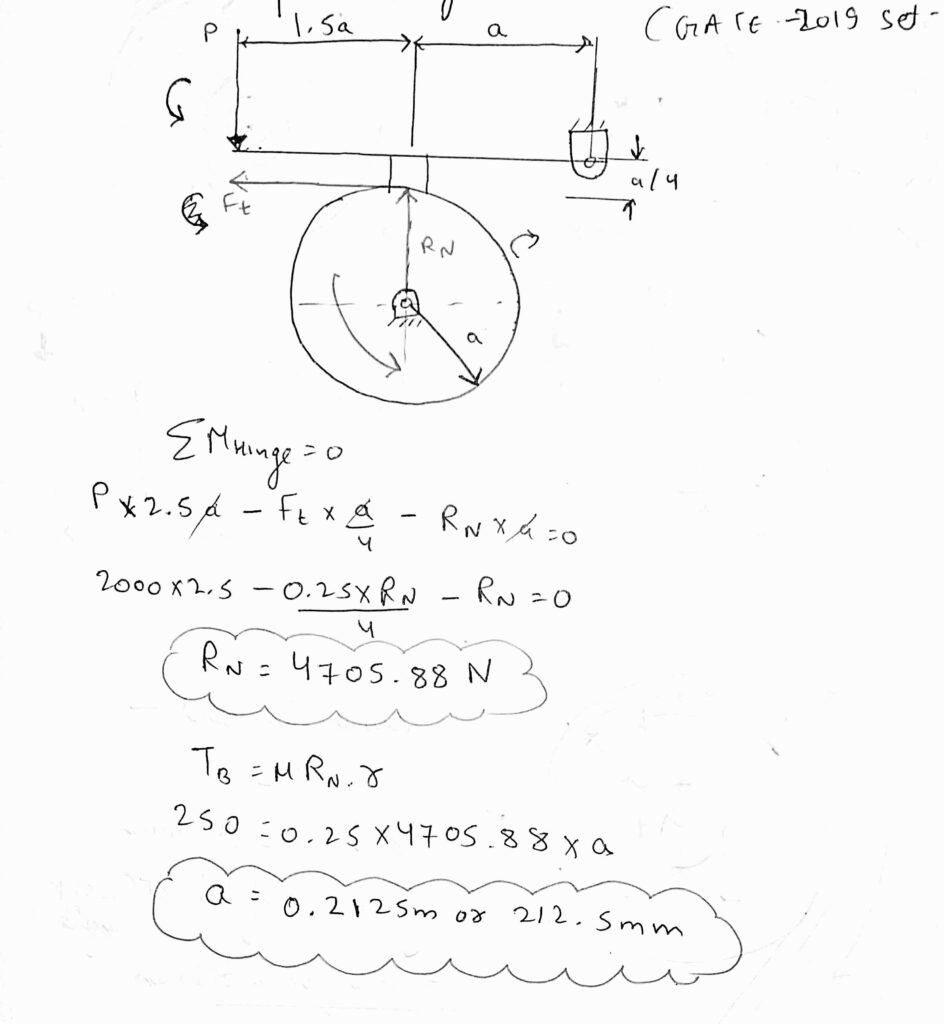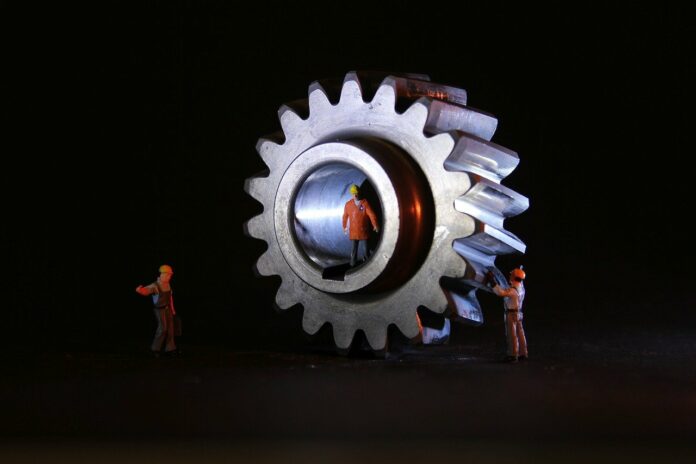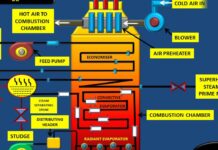In this blog, we will be solving numerical related to brake but before that, we should know that what is Brake? A brake is a device that is used to absorb the energy possessed by a moving system or mechanism by means of friction to slow down or completely stop the motion of the moving systems, such as a rotating drum, machine, or vehicle.
Types of Brake
- Mechanical Brake
- Hydraulic Brake
- Electrical Brake
In this blog, we will restrict our studies to mechanical brake only.
Types of Mechanical Brake
- Radial Brake
- Axial Brake or Disc Brake
Types of Radial Brake
- External (Shoe Brake, Band Brake)
- Internal (Internally expanding shoe brake)
Requirements of Friction Lining
- Friction Lining must have high heat resistance otherwise material may melt due to the production of heat because of friction.
- Friction Lining must be able to withstand the pressure.
- Friction Lining should have a low wear rate.
- It should have a high value of the coefficient of friction.
The block brake as shown in the figure provides a braking torque of 360 N-m. The diameter of the brake drum is 300mm. The coefficient of friction is 0.3 Find the force (P) to be applied at the end of the lever for the clockwise and counterclockwise rotation of the brake drum.
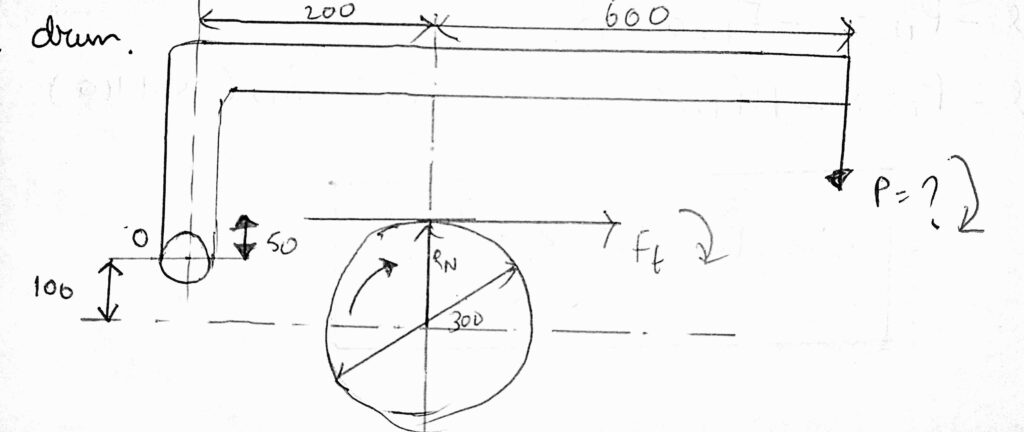
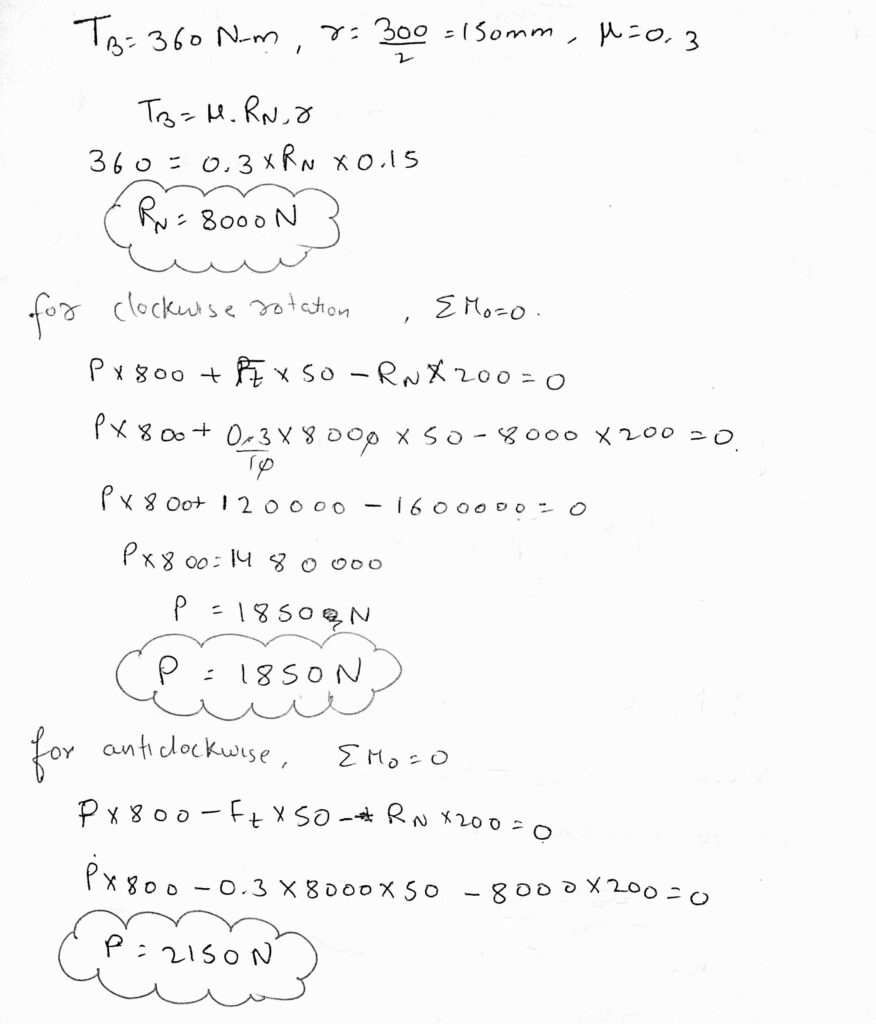
A short shoe external drum brake is shown in the figure. The diameter of the brake drum is 500 mm. The dimensions a=100mm, b= 500mm and c=200mm. The coefficient of friction b/w the drum and shoe are 0.35 The force is applied on the lever F=100N as shown in the figure. The drum is rotating anticlockwise. The braking torque on the drum is __ Nm
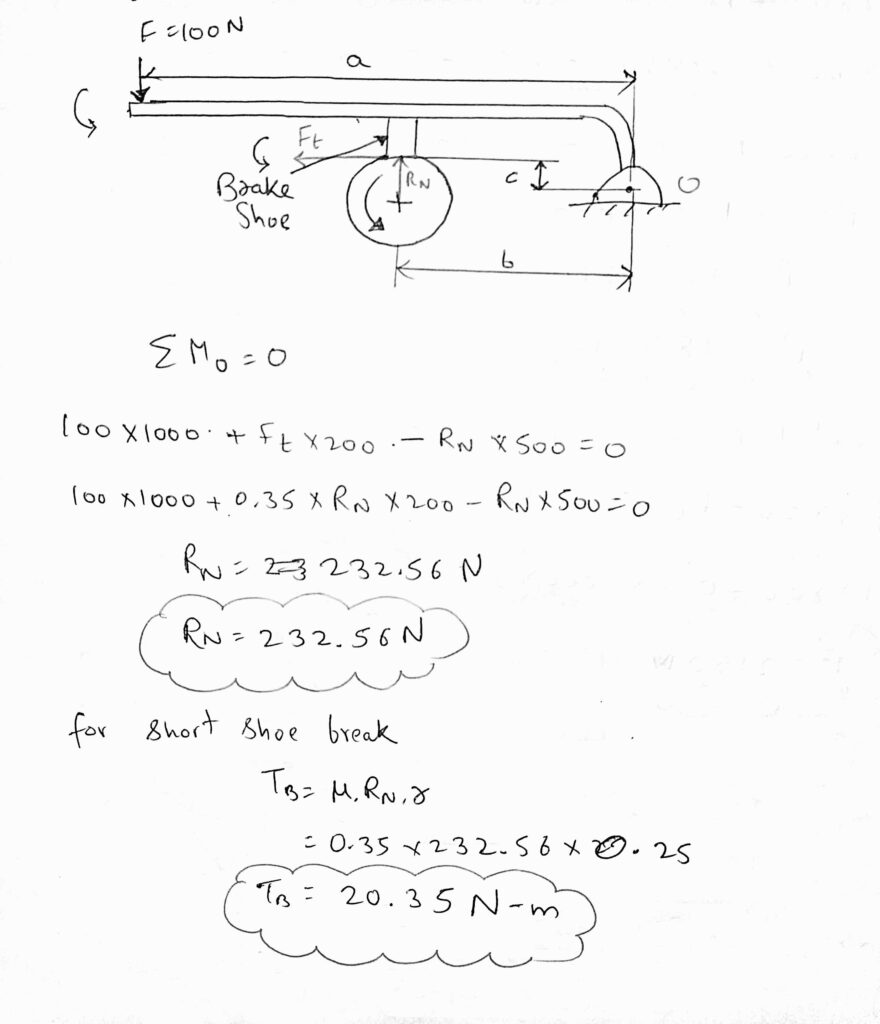
A single block brake with a short shoe and torque capacity of 250 N-m is shown. The cylindrical brake drum rotates anticlockwise at 100 rpm and the coefficient of friction is 0.25 The value of a, in mm (round off to one decimal place), such that the maximum actuating force P is 2000 N is ___
